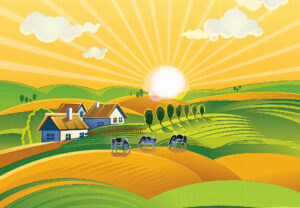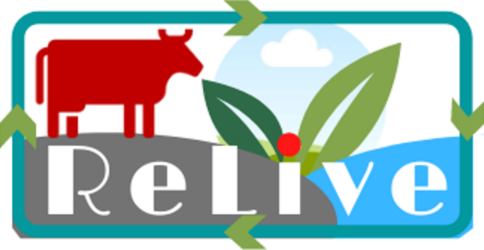Globally, livestock production is predominantly pasture-based and requires a significant input of natural resources while also contributing to the atmospheric build-up of potent GHGs, particularly methane (CH4) and nitrous oxide (N2O) and often leading to environmental pollution.Whilst the reintegrationof livestock with cropping systems can address some of these negative impacts and contribute to circularity in the agri-food sector this is critically dependent on an ability to minimize GHG emissions whilst also ensuring the effective recycling of resources. To do this a systems-based understanding of the complex interactions among the different components of the livestock production system is required, together with the integration of alternative land use options for GHG offsetting and enhanced C storage with the appropriate grazing practices. Diversification in the types of crops and grazing practices could also contribute to enhanced farmland biodiversity.
 The circular economy as it is applied to the agricultural sector envisages:
The circular economy as it is applied to the agricultural sector envisages:(a) The production of agricultural products with no/minimal external inputs.
(b) The development of closed nutrient loops/cycles, where losses are minimal.
(c) Attributing a value (valorisation) to agricultural wastes such as residues and manures.
(d) Decoupling economic growth from any impacts on production, soil health, climate change, biodiversity and ecosystem services.
This proposal addresses a number of thematic priorities within the context of circularity, the diversification of farming systems and
agricultural resilience. This aligns with International/EU strategies, and the National (Irish) Food Wise 25 and Ag Climatise iniatives. It also aligns with several other National Initiatives/National Priority Research Areas, including the Sustainable Healthy Agri-Food Research Plan (SHARP) (https://enterprise.gov.ie), Our Sustainable Future (https://developmenteducation.ie) the National Policy statement on the Bioeconomy (www.gove.ie), the Climate Action Plan (www.gov.ie) and Teagasc Technology Foresight 2035
(www.teagasc.ie). New developments in mixed cropping-livestock systems and the identification of alternative markets for food and
agricultural products could also open up a number of job opportunities and business ventures consistent with the Government’s Action Plan for Jobs (https://enterprise.ie) and Innovation 2020 (https://gov.ie).
agricultural resilience. This aligns with International/EU strategies, and the National (Irish) Food Wise 25 and Ag Climatise iniatives. It also aligns with several other National Initiatives/National Priority Research Areas, including the Sustainable Healthy Agri-Food Research Plan (SHARP) (https://enterprise.gov.ie), Our Sustainable Future (https://developmenteducation.ie) the National Policy statement on the Bioeconomy (www.gove.ie), the Climate Action Plan (www.gov.ie) and Teagasc Technology Foresight 2035
(www.teagasc.ie). New developments in mixed cropping-livestock systems and the identification of alternative markets for food and
agricultural products could also open up a number of job opportunities and business ventures consistent with the Government’s Action Plan for Jobs (https://enterprise.ie) and Innovation 2020 (https://gov.ie).
